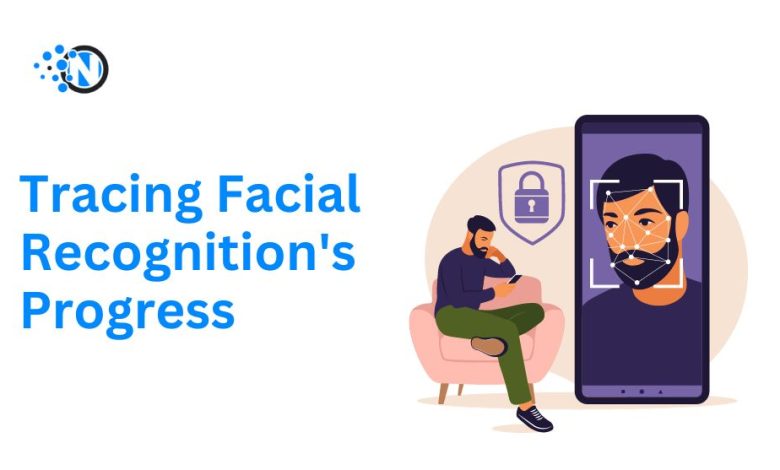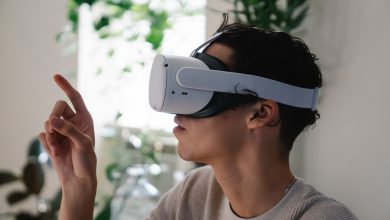From Human Instinct to Machine Precision: Tracing Facial Recognition’s Progress

Throughout time, the face has been a symbol of identity, an emblem of emotions, and a unique signature we carry with us. Traditionally, our ability to discern and recollect faces have been paramount. Facial cues have always been pivotal from identifying allies and strangers to evoking memories. Today, leveraging technology, we have ushered in an era of machine-driven facial recognition. But what’s the story behind the transition from organic recognition to algorithmic accuracy? Let’s discuss the timeline of facial recognition technology.
Inception of Digital Identification
Centuries before machines started ‘seeing’ us, the human fascination with facial categorization was evident. The pioneer in this domain was Alphonse Bertillon, a French forensic expert in the 1800s. He curated a method of cataloguing the physical dimensions of criminals to track repeat offences. Although it was a primitive approach, it sowed the seeds for systematic facial categorization.
However, the genuine technological stride in facial recognition came about in the 1960s. Visionaries, captivated by the uniqueness of human faces, initiated the development of algorithms capable of differentiating intricate facial nuances.
The 1990s – Automation Takes the Lead
The 90s were transformative. Facial recognition witnessed a shift from being a conceptual marvel to a tangible security tool. Eigenfaces, a technique that deconstructed faces into standardized components, became the linchpin. By juxtaposing these components, the technology could ascertain identities from a data set with impressive precision.
The New Millennium – Neural Networks and Instantaneous Detection
The dawn of the 21st century heralded the advent of deep learning, an AI facet leveraging neural networks for pattern discernment. Its integration with facial recognition was a game-changer. No longer did software need manual feature selection. It autonomously trained itself utilizing extensive facial datasets. This autonomous learning yielded unprecedented speed and precision.
Simultaneously, the blossoming of cloud technology facilitated on-the-spot face comparisons. Whether it was for device authentication or pinpointing individuals in masses, facial recognition started molding our tech interactions.
Contemporary Mastery – Delving Beyond Identity
Today’s facial recognition technologies do more than just pinpoint identities. They delve into the realm of emotions. By analyzing facial muscular movements, systems can now infer emotions ranging from joy to despair.
Additionally, pioneering breakthroughs in 3D face detection and infrared imaging have birthed systems resilient to varying ambiances and light situations.

Challenges in the Digital Age
Despite its promising horizon, facial recognition isn’t free from dilemmas:
Individual Privacy: The omnipresence of cameras stirs concerns about perpetual monitoring. In the absence of stringent guidelines, unchecked technology utilization could trespass on personal freedoms.
Systemic Bias: Research has underscored potential biases in facial recognition. Certain racial or gender groups might face discrepancies in accuracy, spurring concerns about inequality.
Data Integrity
Facial recognition’s trajectory is indisputably ascending. As its integration deepens, striking a balance between its promising prospects and inherent challenges will be pivotal. A harmonious future will be one where facial recognition amplifies security and convenience, all while upholding personal rights.
Adopting a Human-Centric Approach
The more technology advances, the more our daily lives are impacted by AI, so much that it’s almost hard to imagine life without it now. While facial recognition technology is indeed advanced, it highlights the complexity of the relationship between privacy and technology. Therefore, it is crucial to prioritize the human perspective during the creation and utilization of technology.
Advancements in Machine Learning
Facial recognition technology has undergone a significant transformation due to the advancement of machine learning and AI. Well, initially algorithms were used just to recognize patterns. But now, neural networks allow them to learn from past experiences and improve. Facial recognition technology has advanced vastly thanks to the emergence of deep learning models, especially Convolutional Neural Networks (CNNs), that boost the accuracy of face detection and analysis.
Facial Recognition in Everyday Life
Facial recognition, although primarily used for security and verification, is now expanding to a variety of different fields. Retail companies imagine that in the future, when a customer walks into a store, the store’s AI will identify the customer using facial recognition and the bill will be generated automatically when the customer exits the store, without the need for any human intervention. Likewise, personalized advertisements are not far from becoming a reality. Digital billboards have became more smarter in recent years that they can identify the age and gender of pedestrians and show customized advertisements according to their interests and preferences.
Healthcare is another sector poised for transformation. From identifying patients and accessing their medical histories instantly to monitoring their emotional responses during treatment, the applications seem boundless.
Applications and Integration
The integration of facial recognition into various sectors has been expansive. From security and law enforcement to marketing and personalized user experiences, the technology’s applications are diverse and far-reaching. Access control systems, surveillance, authentication in smartphones, and even emotional analysis in marketing campaigns are just a few examples of its widespread use.
The Ethical Concerns
However, as the applications grow, so do the ethical quandaries. Consent becomes a significant issue. When we walk into a store or pass by a billboard, are we implicitly agreeing to be recognized? How do we ensure that individuals know and understand how their facial data is being used?
Regulation and oversight have become increasingly vital. A framework that encourages innovation and protects individual rights is the need of the hour. While countries and regions are starting to draft and implement data protection and privacy laws, a more cohesive global framework might be the way forward.
Continual Refinement and Challenges
Continual refinement and overcoming challenges remain focal points in the evolution of facial recognition. Enhancing accuracy, addressing biases, ensuring data privacy, and navigating regulatory landscapes are ongoing endeavors. Efforts to balance technological advancements with ethical considerations are crucial for its responsible and beneficial use.
Future Prospects
Looking ahead, the future of facial recognition technology holds immense promise. Advancements in areas like 3D face recognition, improved algorithms, ethical frameworks, and augmented reality integration are poised to expand its capabilities and applications further, while simultaneously addressing existing concerns.
Conclusion
The journey of facial recognition technology, from its origins in human instinct to the precision of machine-driven algorithms, embodies a transformative evolution. Its trajectory underscores the convergence of biology and technology, showcasing the potential for innovation while necessitating responsible development to navigate the ethical and societal implications it presents.




